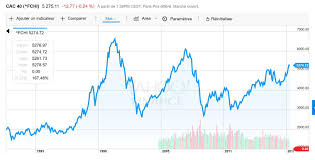Customer Acquisition Cost CAC
What is it? How to calculate it?
It’ll be tough for any business to succeed if it doesn’t have any customers. Customers play one of the most important roles in the business as they often function as brand ambassadors and keep the business running. In fact, customers are the key to the success of any business. A small or new business can easily stand out from the business arena if it has a lot of customers.
Because of their roles, businesses would exert time and effort to ensure that they can haul in customers and foster healthy relationships with them in the long run. Businesses would even pay for training and workshops to ensure that their employees provide the best customer service.
If you see yourself struggling to acquire and maintain customers, knowing more about customer acquisition costs can be helpful. Being adept in this topic will help you streamline your efforts so you won’t end up wasting resources in getting customers.
What is CAC?
Customer Acquisition Cost, or simply CAC, refers to the resources that a business must allocate (financial or otherwise) in order to acquire an additional customer. It includes every single effort necessary to introduce your products and services to potential customers, and then convince them to buy and become active customers.
As mentioned, customers are the lifeblood of every business, which is why business owners should prioritize creating healthy relationships with their audience. Invest in SEO for your SaaS business to draw MQL’s from organic traffic, reduce CAC, and improve your monthly recurring revenue. The more unique your customer acquisition strategies are, the better it will be for your business.
Some common sales & marketing expenses are: paid advertisement, sales and marketing staff salaries, CRM and marketing automation software licenses, events, sponsorships, gifts to customers, content production, social media and web site maintenance and more.
When deciding which customer acquisition strategy to implement, it’s best if you spend time to study the trends in the industry first and assess which strategies are being used by your competitors. Conducting market research can provide a goldmine of information on what works and doesn’t work when it comes to customer retention.
How to calculate CAC?
Conversion rates per sales funnel stage
One way to calculate CAC is to consider the three variables that composes it. This method allows you to go into detail and might give you good insights about your sales process cost and conversions, but can be tricky to get right.
- CPL (Cost Per Lead) (e.g. marketing costs);
- Touch cost (e.g. sales staff salaries);
- Conversion rates at each stage of the sales process.
CAC = (CPL per customer + ‘touch’ costs per customer) * Conversion rate
Sales & Marketing expenses
An easier way to do it is sum all of your Sales & Marketing expenses and divide it by the number of customers acquired on a given period. So let’s say you’ve spend $1,000 this month on sales & marketing and have acquired 5 news customers. Your CAC would be $200, which means you’ve spent $200 to brign each new customer in.
CAC = Total Sales & Marketing expenses / # of New Customers
CAC and LTV
It’s important to notice that CAC is fairly meaningless without knowing the LTV (Customer Lifetime Value). That is, the ability to monetize a customer. And every company is different, so it isn’t a one-size-fits-all scenario; though generally, the more expensive the product, the higher the CAC will be.
CAC plays a major role in calculating the value of the customer to the company and the resulting return on investment (ROI) of acquisition. The calculation of customer valuation helps a company decide how much of its resources can be profitably spent on a particular customer. In general terms, it helps to decide the worth of the customer to the company.
The business challenge is to balance one against the other. Specific numbers are less important than the ratio between them. In any business model the goal is to minimize CAC while maximizing LTV. The best SaaS businesses have a LTV to CAC ratio that is higher than 3, sometimes as high as 7 or 8.
In Conclusion
Now that you know how to compute for the customer acquisition costs, it’s time to look for strategies that can entice them to do business with you. With the number of marketing strategies available today, it’ll be very easy for you to pick one that suits the nature and budget of your business.
But aside from these considerations, it’s also important to make sure that your marketing strategies are innovative. Its always important that you consider seo solutions as part of your overall strategy. Customers have to be able to find you!

